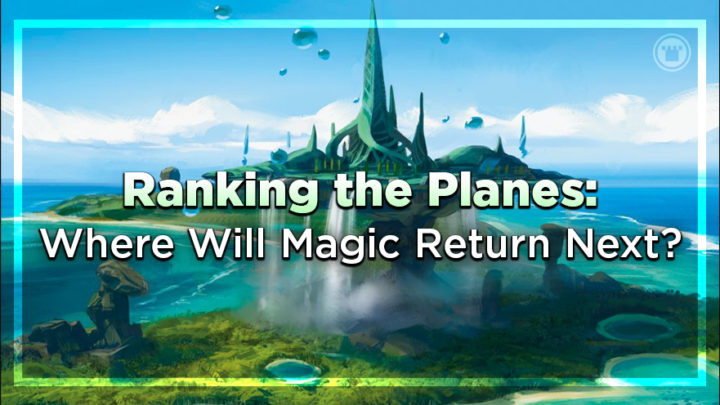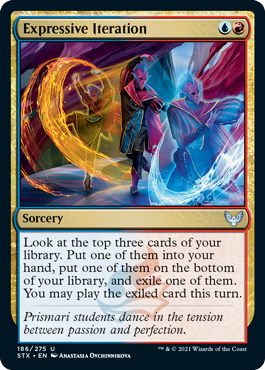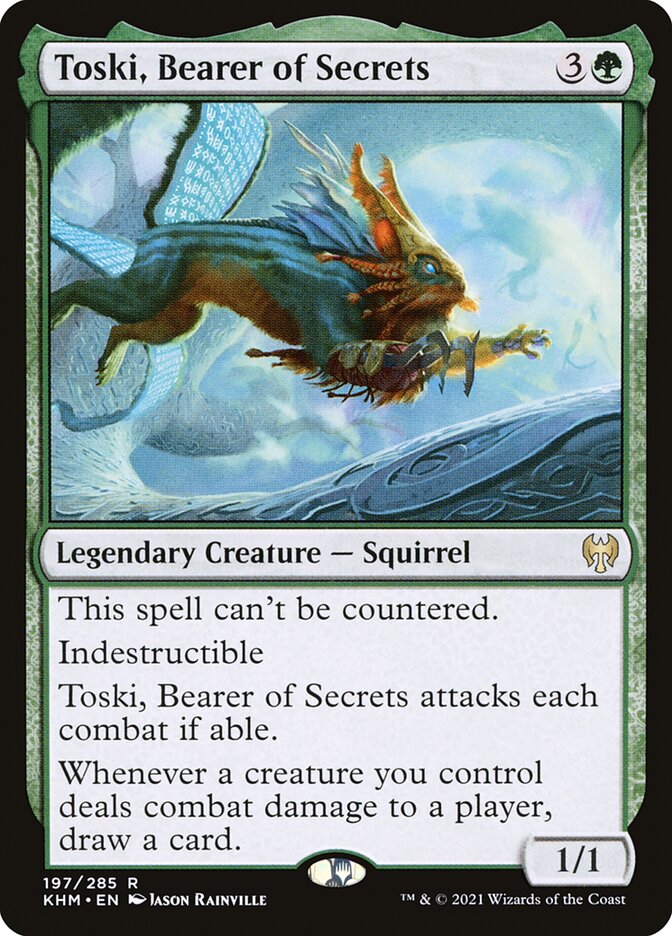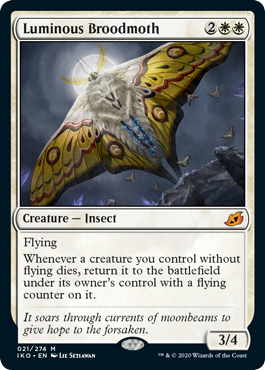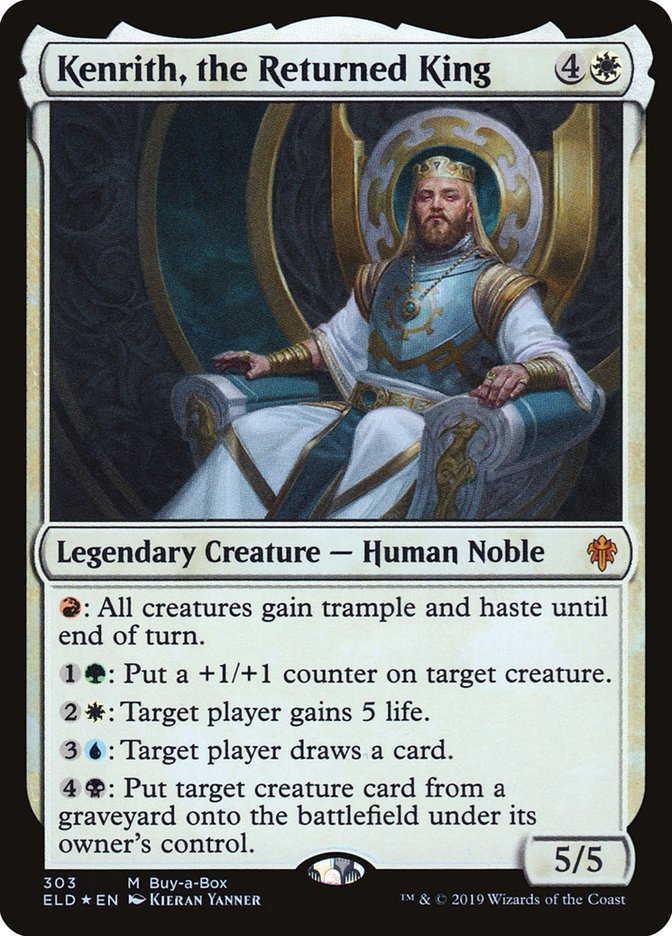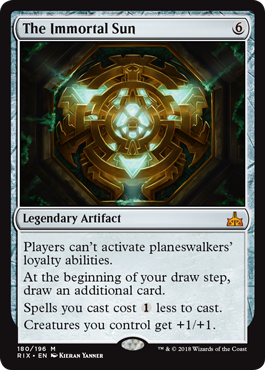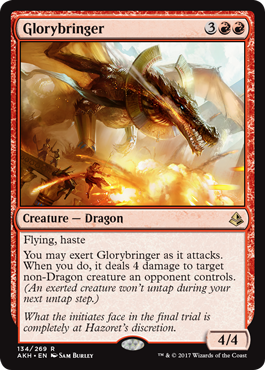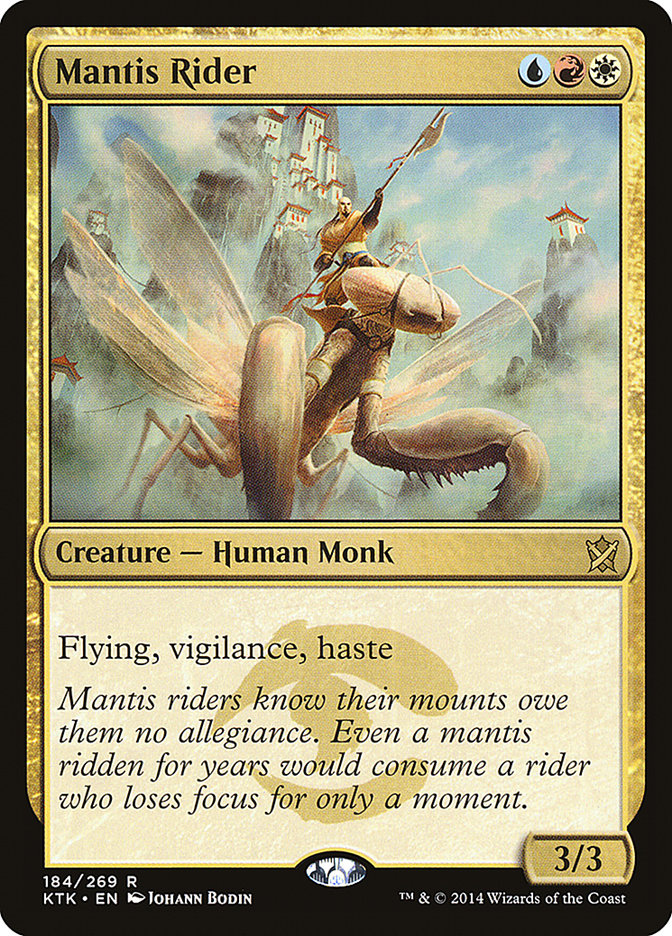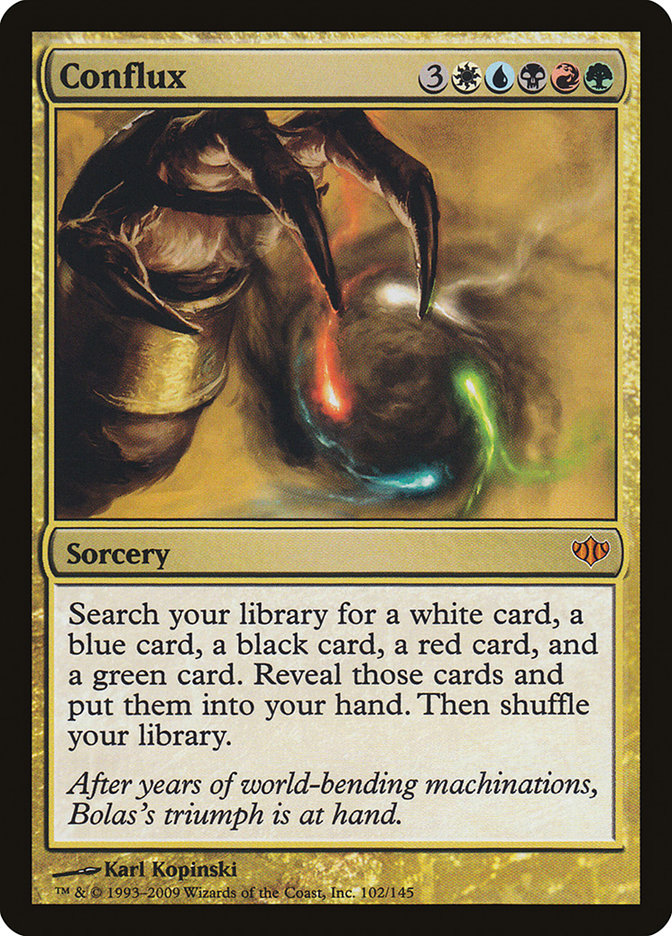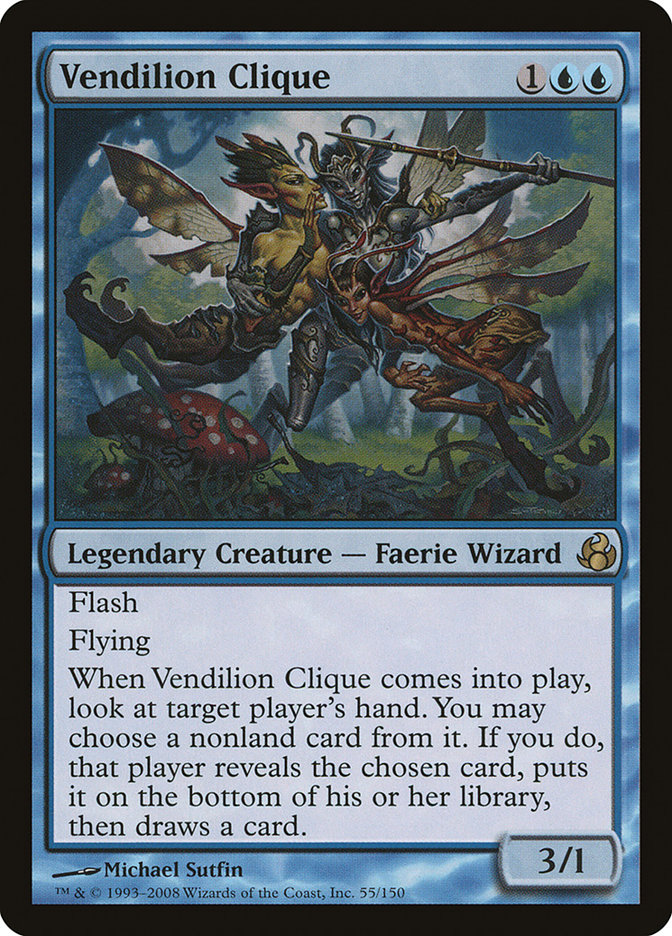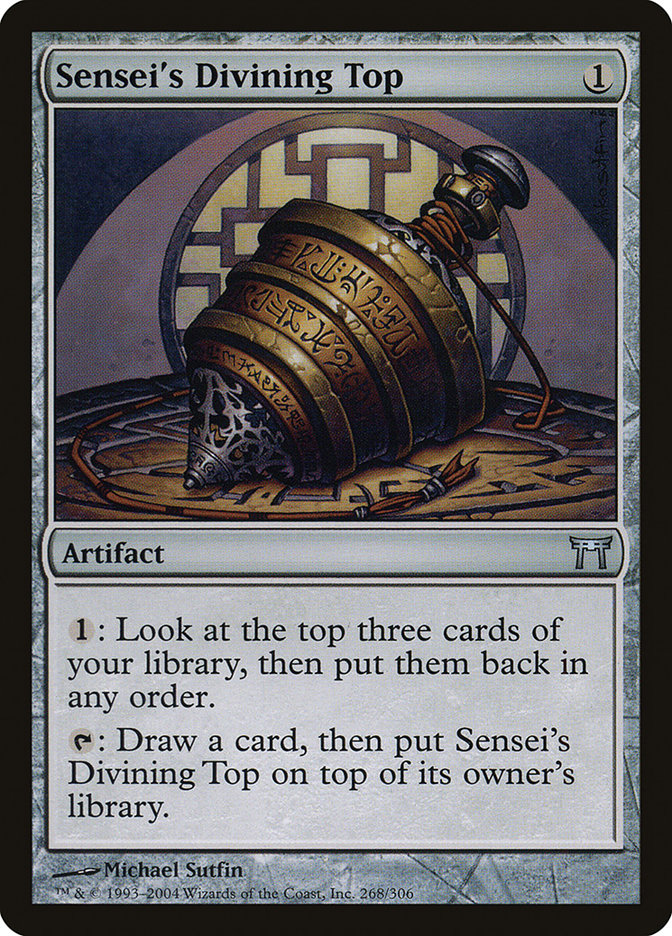Innistrad: Midnight Hunt will be the 90th MTG expansion — a new Standard set which takes place on a particular named world, or plane, within Magic’s multiverse. For the first decade of expansion sets, the multiverse was more of a storytelling conceit or source for new villains, with the majority of sets taking place on Magic’s “home plane” of Dominaria. The creative team began exploring new worlds much more frequently after the success of Mirrodin and Ravnica blocks in the early 00’s, but even in the Modern era, certain planes have gotten more attention than others.
In a little less than twenty years, we have not only returned to both Ravnica and Mirrodin, but now Theros, Zendikar and Innistrad (plus a nostalgic return to Dominaria in 2018, and a guest feature from the denizens of Amonkhet in War of the Spark). In fact, we’ve already made re-returns to both Ravnica and Zendikar, with Innistrad set to join the three-peat club with Midnight Hunt.
THE PLANES THAT NEVER TOOK OFF
So, why have these planes been showered with so much attention while others languish? It makes sense why some of the older or more niche planes haven’t hosted a set — as cool as it would be to visit Segovia, R&D might struggle to balance a whole set around 1/1 creatures.
But that still leaves a solid lineup of “one-and-done” planes, worlds which were developed enough to successfully host an expansion at one point, yet never revisited — at least so far.
With WotC embracing single-set blocks in the last few years, we are now flitting between planes faster than ever before. Making more return stops to previous settings just makes sense, whether to reward old fans or lighten the load on WotC’s worldbuilders. Today, I’ll take a look at those remaining “one-and-done” candidates, ranking which ones are the most “return-able” and why!
WAIT, DIDN’T MARO ALREADY DO THIS?
Effervescent WotC figurehead Mark Rosewater has previously weighed in on this topic (as he has on almost anything Magic-related) and posted his semi-official “Rabiah Scale” to indicate which planes WotC views as likely to make a “return” set. This is my list, not his, but MaRo’s post did confirm a few key things.
Firstly, WotC has very little interest in revisiting any of the planes from that first Dominaria-focused decade, at least for a full expansion. Their whole approach to worldbuilding and storytelling has changed drastically since the days of Gerrard and Urza, and there’s little nostalgia value in revisiting planes that are older than most current players!
Likewise, MaRo’s scale shows a strong preference for returning to worlds which have already hosted Standard expansions, rather than those which debuted in supplemental products like Conspiracy or Battlebond. As such, I’ll only be considering planes which fit those distinctions.
ARCAVIOS (STRIXHAVEN: SCHOOL OF MAGES, 2021)
Return-Ability Rank: 80%
First stop on our lightning tour is Arcavios, home of the Strixhaven wizarding colleges. Feels like we barely left, doesn’t it! The fastest we’ve ever revisited a plane is four years (between Dark Ascension and Shadows Over Innistrad), so we’re probably a while off a new Arcavios set no matter what, but I think that we’re almost certain to get one sooner than later.
The “interplanar wizard school” theme is a rich vein, both for flavor and mechanics. Like Ravnica, its civilized nature lends itself well to deeper storytelling and can carry over plotlines or characters from other sets. The academic atmosphere and well-established characterization of the two-color colleges encouraged players to identify with the setting in Strixhaven, very similar to the Ravnica blueprint for earning a “return” set. But I could also see a lot of merit in a “prequel” set taking place in Arcavios’s apocalyptic Blood Age, showing us where all those crumbling statues and Lorehold archeological sites came from.
KALDHEIM (KALDHEIM, 2021)
Return-Ability Rank: 25%
There’s nothing particularly wrong with Kaldheim, but not every setting was made to be visited twice. It’s true that Kaldheim is drawing on a deep well of inspiration in Norse mythology, and that we’ve only seen a fraction of what probably exists across its full Ten Realms. Even so, it feels like our first trip to Kaldheim already hit all the strongest notes: we got Jormungandr, Fenrir, Thor, Odin, Loki, both Fire and Ice Giants, Elves and Dwarves, Freyja’s cat-drawn chariot, the Bifrost Bridge, Yggdrasil, Ratatoskr, the Valkyries, and yet more besides!
But even more significant for me is the scale of events taking place in Kaldheim’s story. It felt more like the older planar jaunts Magic took in sets like Mercadian Masques — a destructive, high-stakes plot encompassing all the most important figures and dangers of the realm. I don’t know how a Return to Kaldheim could top it, and so I expect we simply won’t see one in the foreseeable future.
IKORIA (IKORIA: LAIR OF BEHEMOTHS, 2020)
Return-Ability Rank: 35%
Many of the same reasons I used to justify my low ranking of Kaldheim can be applied to this plane, yet in hindsight, I’m much more disappointed about Ikoria. The premise of “giant monster world” should offer just as much creative fuel as Arcavios, Innistrad or Ravnica! But other than the mutate mechanic, there was very little about the storyline or background detail of Ikoria that stood out as memorable.
Still, the powerful underlying conflicts of humans against beasts and hunters against bonders could draw WotC back for another attempt at Ikoria, especially if the overarching plot can add some extra spice. I think Ikoria would be the perfect target for the next Phyrexian invasion, for instance — forcing the bonders to unite all its living denizens in an ultimate struggle of biological mutants against engineered machines. If we do go back, I hope WotC will put much more effort into establishing more distinct identities for the monsters in each color or triome — just as they managed to distinguish the Eldrazi broods or Phyrexian legions before them.
ELDRAINE (THRONE OF ELDRAINE, 2019)
Return-Ability Rank: 50%
This is an interesting one. If you based your guess on current sentiment, I think Eldraine’s two year stranglehold on Standard and many bannable cards would make it an unpopular Return destination. And yet, looking past those specifics shows us a richly-detailed and largely unexplored world, taking inspiration from the rich source material of fairytale lore.
The story of Will and Rowan Kenrith’s struggle to restore their father’s humanity successfully introduced memorable characters and lore elements which could be the foundation of the next set — a great knightly tournament at Embereth, perhaps, or the appearance of a mysterious sixth castle? With such an affinity for quests and plenty of evocative concepts still to adopt from the source material, I can imagine Eldraine Part 2 simply being a “gimme” for when WotC is trying to fill their product schedule a few years from now.
IXALAN (IXALAN & RIVALS OF IXALAN, 2017-18)
Return-Ability Rank: 75%
Ixalan had the opposite problem to Eldraine for its first entry into the Magic annals — a relatively under-powered block which led to less time in the spotlight. But it’s hard to deny the plane’s creativity and visual appeal: dinosaur-filled rainforests, golden cities, vampire conquistadors and of course, pirates! The fact that it’s a noted tribal set is a plus, but story-wise, it has similar problems with raised stakes as Kaldheim does.
One way around this issue could simply be to focus less on the jungles surrounding the lost city of Orazca, and give a bit more attention back to the plane’s second continent, Torrezon. We’ve gotten interesting glimpses of this more urbane setting, though its heavy focus on vampires means it might be crowding the same storytelling beats as Innistrad. Nevertheless, a story flowing from Elenda, the Dusk Rose‘s return to Torrezon as a reformer and the possible re-involvement of The Immortal Sun seems like it could carry a “return” set well.
AMONKHET (AMONKHET & HOUR OF DEVASTATION, 2017)
Return-Ability Rank: 10%
If I say that Kaldheim might have burned through the whole potential of its setting on the first visit, then Amonkhet block absolutely, definitively did. It was intentional, of course — the whole plane was rigged up as a freaky production line for Nicol Bolas’s Eternal army. I do think that the horror of the big reveal and “Empire Strikes Back” moment for the heroes of the Gatewatch was worth blowing up a whole plane over two sets. I just don’t think we need to revisit it, and nothing about the plane was really designed for a second tour, anyway.
KALADESH (KALADESH & AETHER REVOLT, 2016-17)
Return-Ability Rank: 90%
Kaladesh may not be my favorite block or my favorite plane, but I have to acknowledge that it ticks virtually every box when it comes to earning a “return” set. The world is large, detailed, and still mostly unexplored, leaving plenty of new ground to distinguish a second block from the first. The steampunk/magitek theming is incredibly recognizable and unique, as are the real-world cultural sources it adapted.
Story-wise, Aether Revolt left Kaladesh in a place of positive upheaval, which is great for justifying a fresh snapshot of the world when next we go there. When you combine that diversity with its ties to key characters like Chandra and memorable mechanics like Vehicles and energy, Kaladesh feels like a near-surety for revisiting in the next five years.
TARKIR (KHANS OF TARKIR, FATE REFORGED & DRAGONS OF TARKIR, 2014-15)
Return-Ability Rank: 85%
We’re now far enough back in Magic history to hit sets ranked on MaRo’s original Rabiah Scale, which was published around the time of Kaladesh’s debut. He also had Kaladesh and Tarkir down as likely to return, albeit with Tarkir ranked a full grade lower. That surprised me a little — Khans block is one of the most popular and influential sets in the current Magic zeitgeist, defining identities for the three-color “wedges” and introducing the key elements for the ambitious meta-story that would culminate in War of the Spark. Mechanically, Tarkir has popular themes like dragons, prowess and morph, and the first block did a tremendous job in selling people on the plane’s characters and history.
If I had to guess why Return to Tarkir might be a little less viable than Return to Kaladesh, the biggest issue might again be narrative exhaustion. Like some other Magic settings (Mirrodin comes to mind), the memorable elements of Tarkir are presented as static; the clans just have a general tension and ongoing feud against the dragons and each other. It’s hard to imagine anything short of history-revising time travel evoking enough wild change to inspire a new set around Tarkir. But then, I’m not the one paid to imagine this stuff.
ALARA (SHARDS OF ALARA, CONFLUX & ALARA REBORN, 2008-09)
Return-Ability Rank: 75%
Look at how large the time gaps are getting between each orphaned plane now! Between the conclusion of Alara block and the launch of Tarkir, we had five straight years of hits: Zendikar, Mirrodin, Innistrad, Ravnica, Theros. That period also (coincidence or not) marked a major shift in the power level and design philosophies of Magic. A huge number of lasting Constructed staples were printed, including 90% of all eternal-playable white cards. The metagame influence of those sets largely blotted out what had come before, and as the most recently released sets, Alara block was the most overshadowed.
Being swiftly forgotten does a plane no favors on the Rabiah/Return-To scale, and Alara did also seemingly fall victim to story fatigue when Bolas smashed its shards into each other. But unlike the apocalypse Bolas wrought on Amonkhet in Hour of Devastation, the Conflux left behind a plane still teeming with life and story possibilities — arguably more so than before, given the natural conflict between the realms of Naya, Bant, Esper, Grixis and Jund. Each of those shards was quite brilliantly evoked in the original set, enough that their aesthetics and names have carried through to the present day. I suspect WotC is just waiting for the right story idea to revisit them.
LORWYN/SHADOWMOOR (LORWYN, MORNINGTIDE, SHADOWMOOR & EVENTIDE, 2007-08)
Return-Ability Rank: 30%
Having to mark the dual-natured plane this low makes me quite forlorn; on its own merits, I think it deserves much better. The creative team at WotC invented not one, but two of the most distinctive and consistent visual identities ever for a plane, offering a vision of European folklore which stands out far more than Eldraine. The colorful twists to familiar tribes like Elves and Goblins, the patchwork-animal Elementals and jelly-like changelings, and the dramatic shift towards darkness in Shadowmoor are some of WotC’s best art direction ever.
Unfortunately, despite such evocative tribal identities and standout figures like the Spirit Avatar cycle, these blocks struggled against the same “static” feeling as Tarkir. They were printed during a low ebb in Magic’s overall popularity, a transitional phase toward the Gatewatch-heavy future of the lore, and a Standard metagame completely overrun by UB Faeries. The seemingly final nature of the transition to Shadowmoor offers further complications to any Return To Lorwyn — and yet, MaRo has hinted that WotC’s view on that has improved in the last few years. Who knows what they have up their sleeves…
KAMIGAWA (CHAMPIONS OF KAMIGAWA, BETRAYERS OF KAMIGAWA & SAVIORS OF KAMIGAWA, 2004-05)
Return-Ability Rank: 100%* (PLEASE WOTC, COME ON, I’M BEGGING YOU!)
And so, here we are: the oldest outstanding planar setting not yet blessed by a second visit. With a similar design pedigree to regular destinations Mirrodin and Ravnica, a unique cultural underpinning in Japanese history and myth, and the overall best art of any Magic block ever (fight me), it is astonishing every year that we still have not returned to Kamigawa.
We could still go back at any time — it’s not like samurai aesthetics have become any less popular in the last 17 years. But the minds at WotC seem to have long since been made up: MaRo ranked it a whopping 8/10 on his 2016 Rabiah Scale. That would make it equally as viable a setting as Segovia, the “everything’s tiny” joke plane from the original Alpha rulebook. That… has to be an exaggeration, right? What would have made Kamigawa such a dirty word over at WotC HQ!?
Some of the reasons offered up include the poor sales and tournament performance of the original block, which was drastically overshadowed by the infamous Affinity decks from Mirrodin. A similar fate recently befell Ixalan in comparison to Kaladesh and Amonkhet. But comparing those two “weak” blocks Kamigawa actually boasts far more noteworthy printings — and it’s not like the power level of the set is intrinsically tied to the plane, anyway!
PLANE AND SIMPLE
So, that completes our little tour along the less-traveled roads of modern Magic history. It was an interesting thought exercise for me, and it has highlighted the impact of the move from three-set blocks to stand-alone sets on worldbuilding and storytelling. I do expect to see more of these “return” sets in the future, even if the Innistrad double-header of Midnight Hunt and Crimson Vow signals we’re easing off the “new plane every set” pace we’ve kept up since War of the Spark.
Given enough time, I think almost any of these planes might get a new lease on life — even Kamigawa. In fact, the advent of Universes Beyond may help it get there. As far back as 2019, WotC has been spied registering domains for “Kamigawa: Neon Dynasty” and flashing around artwork for cyberpunk-themed planeswalkers. Borrowing aesthetics from Netrunner and Shadowrun would have seemed an unthinkable culture clash for Magic even three years ago, but next to Rick Grimes and Space Marines, a cyberpunk Kamigawa set is suddenly par for the course. It’s not necessarily the “return” I’ve been waiting for, but it would be far better than never returning at all.

Tom’s fate was sealed in 7th grade when his friend lent him a pile of commons to play Magic. He quickly picked up Boros and Orzhov decks in Ravnica block and has remained a staunch white magician ever since. A fan of all Constructed formats, he enjoys studying the history of the tournament meta. He specializes in midrange decks, especially Death & Taxes and Martyr Proc. One day, he swears he will win an MCQ with Evershrike. Ask him how at @AWanderingBard, or watch him stream Magic at twitch.tv/TheWanderingBard.

